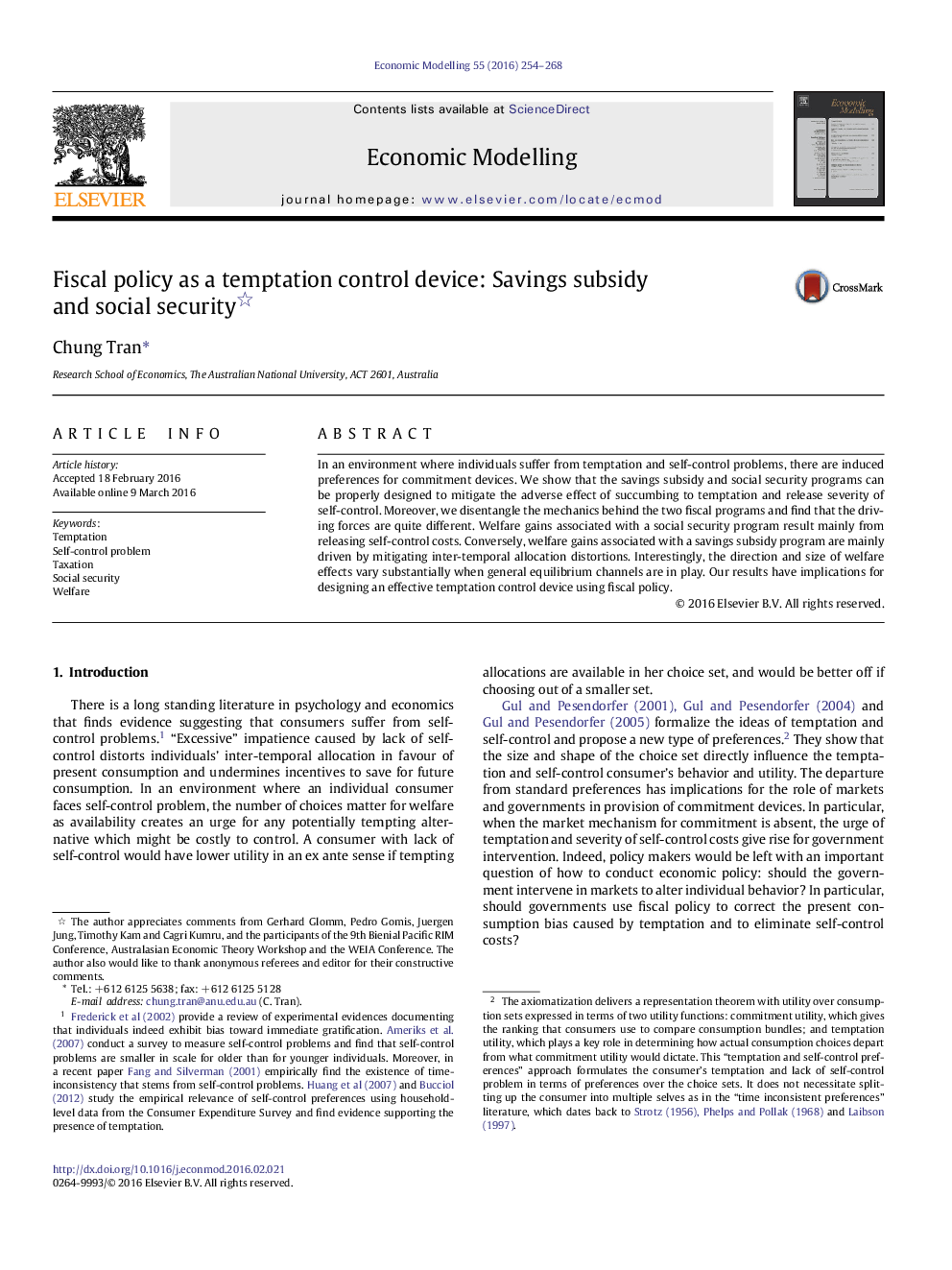| Article ID | Journal | Published Year | Pages | File Type |
|---|---|---|---|---|
| 5053568 | Economic Modelling | 2016 | 15 Pages |
Abstract
In an environment where individuals suffer from temptation and self-control problems, there are induced preferences for commitment devices. We show that the savings subsidy and social security programs can be properly designed to mitigate the adverse effect of succumbing to temptation and release severity of self-control. Moreover, we disentangle the mechanics behind the two fiscal programs and find that the driving forces are quite different. Welfare gains associated with a social security program result mainly from releasing self-control costs. Conversely, welfare gains associated with a savings subsidy program are mainly driven by mitigating inter-temporal allocation distortions. Interestingly, the direction and size of welfare effects vary substantially when general equilibrium channels are in play. Our results have implications for designing an effective temptation control device using fiscal policy.
Related Topics
Social Sciences and Humanities
Economics, Econometrics and Finance
Economics and Econometrics
Authors
Chung Tran,
